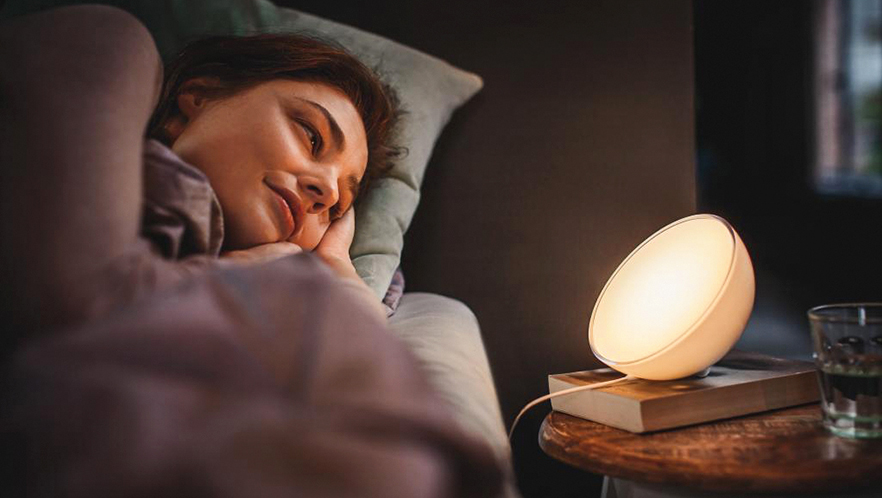Sleep. We all do it, but many of us don’t get enough of it, even though it’s vital for physical and mental health. Not getting enough sleep can lead to stress, difficulty focusing, lower immunity, obesity and worse.
Even so, it can be easy to let sleep fall to the bottom of the to-do list. And, believe it or not, the timing and type of light we’re exposed to can have a big impact on how well we catch our Zs.
Enter smart lighting. In addition to being convenient and sometimes amusing, it can have huge health benefits when combined with good habits.
A variety of gadgets can help you harness the power of light to support a better sleep cycle. Some let you manage when your lights go on and off. Others give you full control over the hue and intensity of the light to help you establish the best sleep environment.
We chatted with our friends at Philips Lighting to illuminate us on how to take better control of your sleep.
Body clock and biology
Our bodies run on a natural clock, known as our circadian rhythm. The tricky part: It runs a tad longer than 24 hours. So, naturally, we want to go to bed later and later, which causes us to wake up feeling drowsier and drowsier.
Two hormones affect our circadian rhythm: cortisol and melatonin. Our cortisol levels naturally rise in the morning to help us feel energized. Melatonin increases in the evening to help us fall asleep.
Light, both natural and artificial, directly affects the production of these hormones.
Get up!
Cooler, blue-toned lights stimulate our bodies to generate cortisol. That’s great for helping us wake up and hop out of bed.
Bright blue light in the morning, even before we wake up, can boost our energy level — and our mood — throughout the day. It can even shift our circadian rhythm to help us feel more like “morning people,” helping us feel bright-eyed and bushy-tailed, ready to take on any case of the Mondays.
Pro tip: Scheduling smart lights in your bedroom to wake you up by gradually getting brighter before your alarm goes off can be more advantageous than a morning cup of coffee. Extra points if you set your morning lights to have tones of blue.
Go to sleep!
When it starts getting dark outside, our bodies know to release melatonin, which makes us sleepy. However, if we’re exposed to too much light before bed, especially the bright blue light we need in the morning, our bodies won’t know it’s time to snooze.
Warmer, amber-toned lights are less disruptive to our body’s natural sleep cycle and help produce melatonin. Dim lights help too. They prevent your body from feeling restless when it’s time for your head to finally hit that pillow.
Pro tip: Avoid blue light, especially from smartphone and computer screens, two hours before bed. This helps your body produce enough melatonin to fall asleep quickly. Also, program your lights and other devices to shift into a dim, night-friendly mode.
Smart light
Luckily, it’s pretty easy to take control of the type of light you’re exposed to and when you’re exposed to it. Various connected lighting technologies are available to help you change the way you experience light in your bedroom and throughout your home.
With Philips Hue, for example, you can play around with 50,000 shades of white light to create the perfect ambiance, or take advantage of one of the established light recipes designed to meet your needs.
If you want to learn more about smart lighting options that could work with your home, visit a nearby Best Buy store to talk to one of our expert Blue Shirts. Or go to BestBuy.com to check out our Smart Home Buying Guide.


